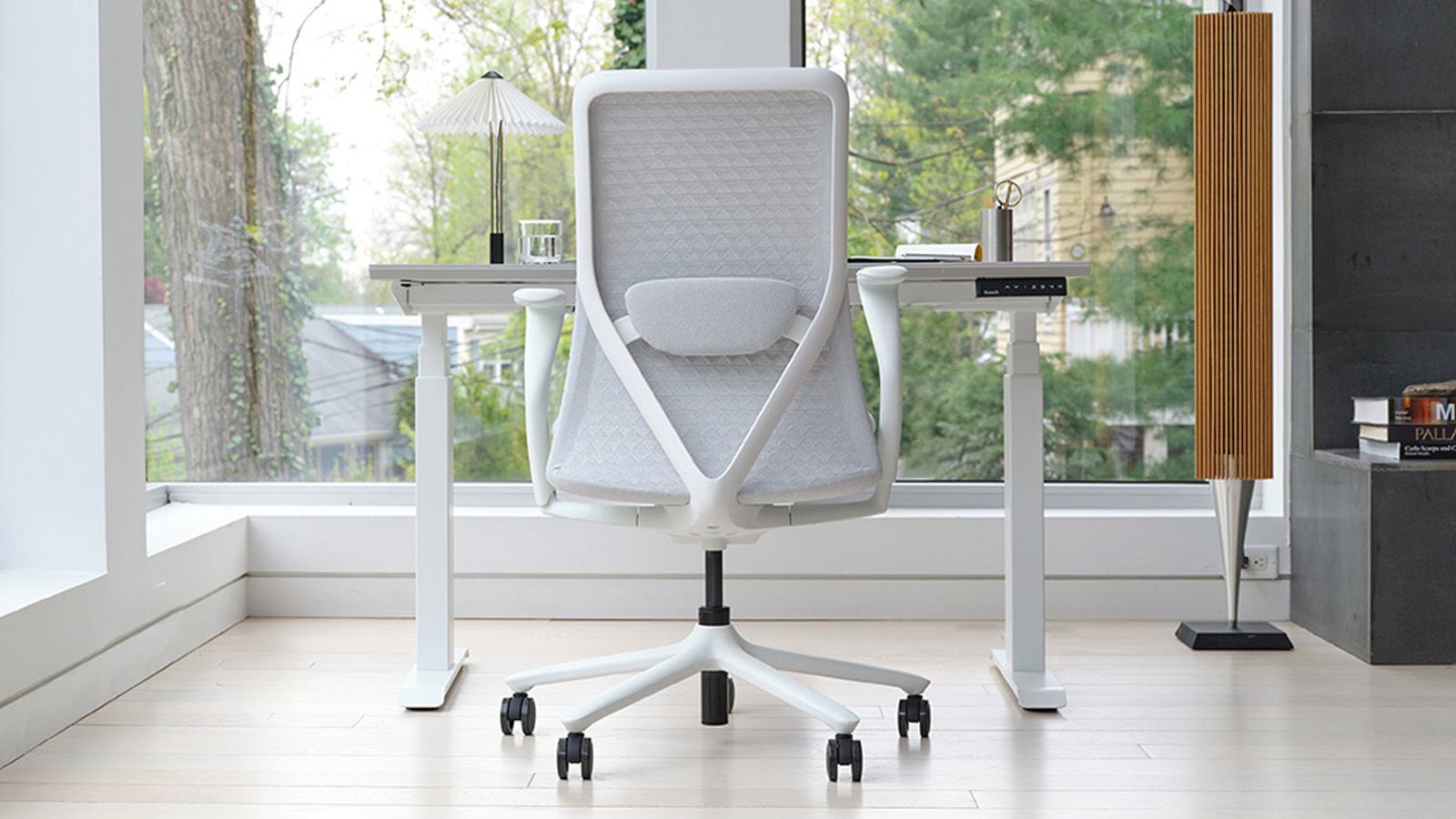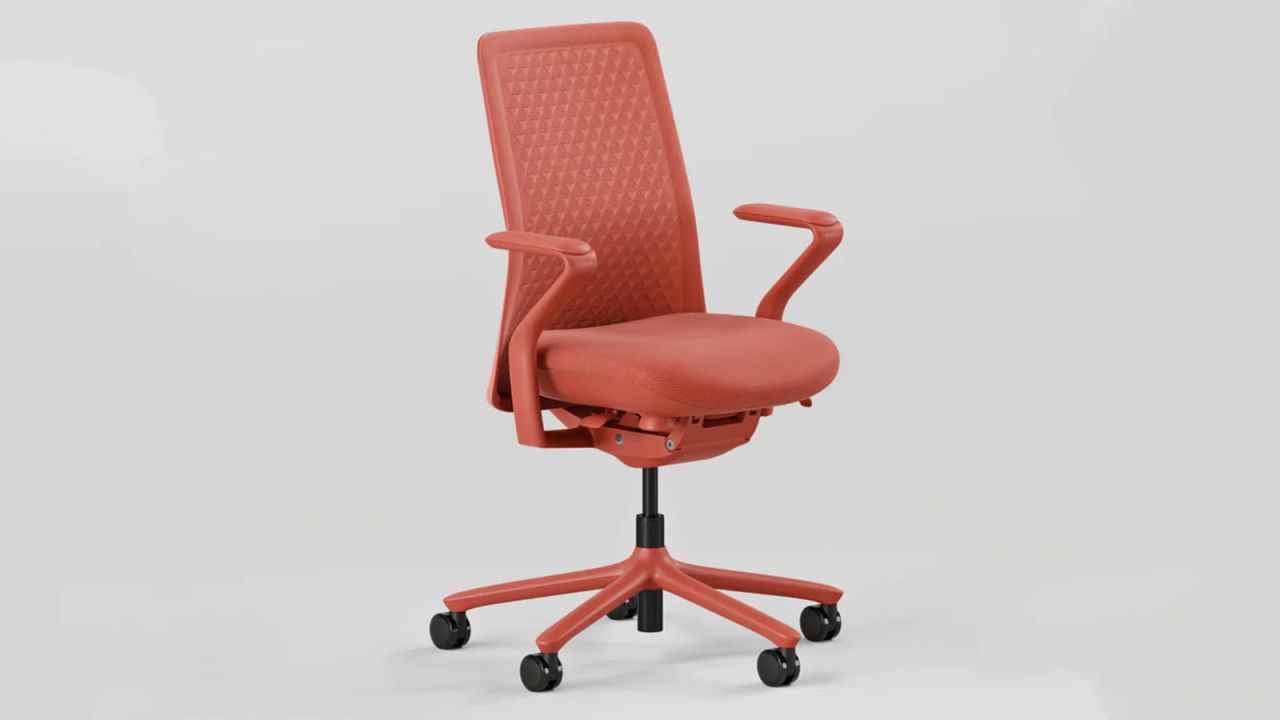Branch’s Verve Chair is the affordable furniture brand’s latest, most stylish task chair. It’s a slimmed-down model with an attractive, minimalist design that should look good in a wide range of spaces — including home offices — but has plenty of adjustability and support to keep you happy for a whole workday.
The Verve Chair is Branch's most stylish office chair. We found it comfortable and supportive, and its slimmed-down look and simplified adjustments make it a good fit for home office spaces. Armrest adjustment is limited, and it isn't for the very tall, but it's a solid piece of furniture if it matches your measurements.
What we liked about it

Branch’s Verve chair is comfortable, stable and highly adjustable, and it looks great. While it’s clearly an “office chair,” and has a futuristic look in line with pricier office chairs, it isn’t overly bulky, nor does it look so industrial that it’ll seem out of place in your multipurpose home office. The sample we received is finished in a tasteful white and gray (it’s also available in black and a striking coral color) that integrates well with the rest of our office furniture.
Key specs
? Fits 5’0” - 6’2” and up to 300lbs
? 6 points of adjustment
? 20° chair tilt range
? 5 tilt tension cycles
? 2” lumbar rest range
? 2.5” seat depth range
? 2.5” armrest height range
The Verve comes unassembled in a surprisingly small box (a good thing indeed), and assembly is simple, with clear instructions and all necessary tools included. We were up and running within 20 minutes of opening the package.
We put the Verve into service in our home office and used it regularly for several months (it took the place of a Haworth Soji that we’ve also been checking out lately), and overall we found it quite comfortable — it’s not just slimmer and much more high-end-looking than the Branch Ergonomic Chair we’ve tested previously, but strikes a different balance between adjustability and simplicity, with the accent here on the latter.
The controls are very easy to use and access — we were able to figure out a good fit even before consulting the manual. Tilt, tilt lock and tension controls are all right under the seat bottom and easy to get to and use.
The Verve offers a seat-depth adjustment, a critical point of fit that we feel is critical for a good chair. This extends the range of useful adjustment and lets you fine-tune the fit and support, since not everyone’s femurs make up the same proportion of their overall height. We’d love to see this adjustment on every chair, and the implementation on the Verve is easy to access and set.

The Verve has a superior lumbar adjustment system that we found more comfortable than the version used on the less expensive chair. All of the points of contact, from the cushioned seat and lumbar pad to the mesh back, are cool and comfortable and we never felt any pressure points developing over the course of the workday.
The substantial cast-metal five-legged base gives the chair a stable feel, and the casters roll smoothly on both hard floors and carpeting. We typically use a nubby woven rug as a chair mat and it handles the rough surface well.
What we didn’t like about it

The arms of the Verve are going to be the make-or-break feature for most people. The design is dead simple, but they only offer a single dimension of adjustment? — height — where it’s common for chairs in this class to offer more adjustability.
The benefit is that they are easy to adjust into place — just lift, release and there they stay — but they’re just as easy to knock out of place, since lifting the arm further unlocks it, and it drops to its lowest rest position. Since we were used to a chair with a different mechanism, until we got used to this we knocked the arms out of position every time we got up to take a break or switch to a standing position. It’s easy enough to pick it up again, but annoying until you adjust your habits to grab the chair back instead.
The bigger issue for most will be the single plane of adjustment. While the armrest surface is relatively large and should offer support to a wide range of body types, if you’re particularly narrow or broad shouldered (or if you prefer the arms further back and out of the way) you may struggle to find a position you like. Branch’s cheaper Ergonomic Chair, by comparison, has 3D armrests that you can adjust in height, width and depth. Several other chairs we looked at in this price range, like the Steelcase Series 1 we recommend overall, also offer more adjustments.
The material used on the seat cushion of the model we tested is soft and the padding is comfortable, but the weave is a little fragile, and if you live in a household with cats you’ll find they a) like the feel of the fabric and b) it’s very easy for them to pull threads loose. The weave is very dense so a few pulled loops are easy enough to tuck back in, but over a long period of sustained feline activity we’d expect some noticeable wear.
Branch suggests that this chair is good for sitters up to around 6 foot, 2 inches tall, and our use bears that out. At maximum height adjustment for a long-legged person right around 6 feet tall, it was just at the edge of comfort, so if you’re tall you might want to check the Verve out in person or look at Branch’s Task Chair, which doesn’t look as nice but adjusts a tad taller.
Bottom line
Like all office chairs, the Verve strikes a balance between giving users a good range of support and fit adjustments and offering a clean, attractive appearance — and it’s largely successful. It isn’t for everyone — if you are particular about your armrest position, you might struggle, and we don’t think very tall people will be happy with this particular chair — but it’s a comfortable, good-looking task chair with a minimalist enough frame to fit most home offices.

















